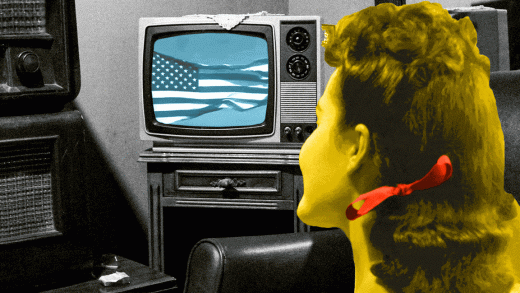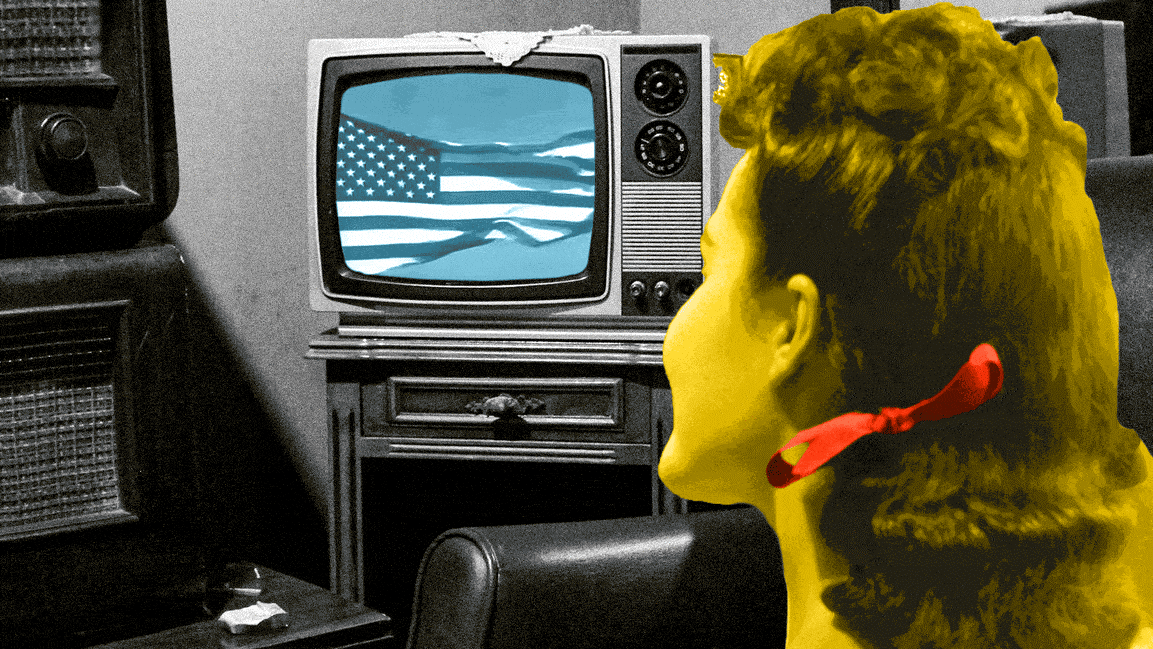The Democrats’ brand advertising is broken. Can Hooligans fix it?
When Supreme Court Justice Samuel A. Alito Jr.’s draft opinion to overturn Roe v. Wade was leaked earlier this week, the already high stakes for the 2022 midterm elections rose just a bit higher. Both parties see it as an issue that will mobilize voters. In a statement, President Biden said that “if the Court does overturn Roe, it will fall on our nation’s elected officials at all levels of government to protect a woman’s right to choose. And it will fall on voters to elect pro-choice officials this November.”
This bombshell news comes at a curious time for the hothouse world of political advertising creative strategy. Its role in encouraging and inspiring the electorate to vote in the midterms was already in question. Although corners of this world have been experimenting this past decade with the warhorse formulas of the genre, let’s be honest: Most political advertising rarely deviates from the same old, generic combination of bad b-roll, scare-mongering newspaper headlines, ominous music, and a candidate giving a less-than-inspiring teleprompter read. If you’re lucky, maybe instead of leaning on a fence, the candidate will be sitting in a finely appointed living room.
Wow. No wonder voters do not approve that message.
For Republicans, the play continues to be to triple down on things that will outrage the media and anyone to the left of them on social media, thereby winning the hearts and votes of liberal tear drinkers. In other words, a potent mixture of gun porn and blue-collar cosplay. A post-Roe world opens up a world of possibilities for stoking the culture war.
More interesting, though, may be what the Democrats will do next. To get some insight into the future of the ads that’ll be filling commercial breaks and your social-media feeds for the next six months, I checked in with the political advertising specialists at The Hooligans Agency. The creative shop was founded in 2020 by long-time TV producer Shannon Fitzgerald and Tim Lim, a political media strategist, who worked on President Obama’s reelection campaign in 2012 and Hillary for America, and he served as director of partnerships at Change.org. In less than two years, the agency has since done work for both campaigns as well as outside groups, such as End Citizens United, RepresentUs, Lindsey Must Go Pac, Color of Change, Common Defense, The Southern Poverty Law Center, and more.
Lim says that the motivation for starting the agency was to try and address an issue that the Democratic movement really isn’t tackling. “The party is in desperate need of modernization, and we’ve been running the same (advertising) playbooks for decades,” says Lim. “It’s simple: Raise a ton of money to go on broadcast TV for as long as possible, make two ads—one that’s positive, then one about issues—and then max out on this cookie-cutter message. If you look at the spending, that’s still the main equation. We don’t need more experimentation or fact sheets about what voters are consuming and how they’re consuming it. We all know this is not how voters are consuming media. But it’s the entrenched system we have.”
Fitzgerald is the creative side of the partnership, with decades of TV and film experience across Fox, CBS, Warner Bros., Sony Pictures, and others. She made the jump to politics after the 2016 election, and most recently led video content strategy, production, and creative direction for Pete Buttigieg’s 2020 Presidential campaign.
When it comes to political ads, Fitzgerald says that most people’s eyes glaze over and that the biggest misconception in politics is that you can’t have substance and be entertaining at the same time. The recent exceptions that reinforce her point: 2008’s push for Florida seniors led by Sarah Silverman’s “The Great Schlep,” the 2018 anthem-like spots by Means of Production that helped drive voters to Alexandria Ocasio-Cortez and Ayanna Pressley, and 2022 Senate candidate Gary Chambers smoking a blunt.
For creative strategy, Fitzgerald subscribes to what the legendary industrial designer Raymond Loewy dubbed the MAYA Principle: Most Advanced, Yet Acceptable. “It needs to be the perfect combination of familiar and unfamiliar,” she says. “If it’s too familiar, the audience will get bored. If it’s too unfamiliar, it’ll freak them out.”
This could come in the form of a spoof of ADT home security ads, warning about the most vulnerable Democratic candidates, or an Air Force veteran reading a letter of resignation from Kyrsten Sinema’s veteran advisory council.
“You[Sen. Sinema] campaigned on lowering prescription drug prices, but now you’re opposing the #BuildBackBetterAct
Are you choosing to answer to big donors rather than Arizonans?”
-Sylvia Gonzalez Andersh, US Air Force Veteran pic.twitter.com/YEaTU1k3kj
— Common Defense (@commondefense) October 21, 2021
With the veterans spot, Common Defense—the independent political action committee (PAC) advocating for progressive issues from a veterans’ perspective—had been looking for a standard testimonial-style ad, with U.S. Air Force sergeant Sylvia Gonzalez Andersh talking about why she wrote the letter. But Fitzgerald wanted to tap into the emotion of this decision, and instead wanted the sergeant to read her letter to viewers. “She wrote it, she’s fired up, she’s emotionally connected to those words,” says Fitzgerald. “The entertainment aspect, in this case, was tapping into the authority and passion in that letter.”
In light of the reignited Roe v. Wade issue, this is a potentially galvanizing moment for Democratic activists, but their challenge is to amplify and help everyday voters better understand why this is so important—and then act on it. The party was already looking for ways to counter the troubling poll numbers among younger voters. “This is going to be a big challenge for the midterms, in terms of speaking to voters, because it’s clear their bullshit meter is on high alert, their limitation for taking on new information is low, and they’re busy trying to survive,” says Lim. “So how are we breaking through to them that is relevant and authentic? It’s not by throwing around a bunch of legal phrases with facts and figures. That doesn’t work.”
Lim and Fitzgerald are advocating for an approach that’s been familiar to major brand marketers for more than a decade: Spread ad spend across audiences and platforms and create work bespoke to the viewer—where they’re consuming it. All the while fostering an agility that allows campaigns to respond quickly and creatively to events, and try to tap into culture. Achieving that in politics has been an uphill battle, especially, as Lim says, when political strategists pose as ad creatives. But the agency cofounders are hoping that one silver lining to the increased stakes of the upcoming midterms is a boost in Dems’ willingness to, quite frankly, behave like a modern brand.
There are some impediments inherent in the way the business of politics works that can prevent a party from operating like a consumer marketer. One being that the party, the candidates, and outside advocacy groups are subject to rules that prevent the kind of coordination enjoyed by corporate brands. Another is who is in the room making these ads. “It’s very clear to anyone who works on the brand side that the types of programs being run on the political side, and how they’re structuring it, is not set up for success,” says Lim. “Most people making these creative decisions on campaigns are, frankly, old white guys who have been running campaigns their whole life and now decided they want to make a script. That’s how you get a lot of the creative we’re stuck with today.”
Although politicos cannot wholly execute like marketers because of the way campaign-finance rules work, within what can be controlled by a campaign, third-party issue advocacy groups, or PACs, they have to embrace the same principles and tools that marketers use.
“We raise a lot of money, we just don’t spend it very well,” says Fitzgerald. “[Roe v. Wade] isn’t the only issue. There’s also marriage equality and civil rights, and they may come for those things next; so there are so many ways to connect with this on an emotional and visceral level.”
Fast Company , Read Full Story
(38)



